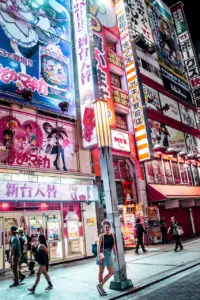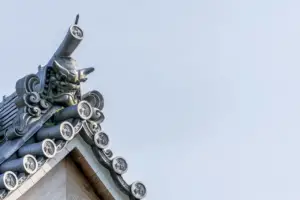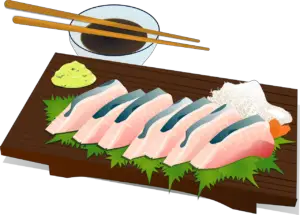Japan’s tea culture is renowned worldwide for its unique blend of ancient tradition and modern innovation. From the serene tea gardens of Kyoto to bustling tea shops in Tokyo, Japan offers a diverse range of tea experiences for enthusiasts and novices alike.
One of the best ways to immerse oneself in this rich tea culture is by attending one of Japan’s many tea festivals. These events offer a glimpse into the world of tea production, processing, and consumption, as well as an opportunity to taste rare and exotic varieties of tea.
This guide provides an overview of Japan’s tea culture, including the top tea festivals in the country, traditional tea ceremonies, tastings of rare and exotic teas, tea harvesting and processing, tea and food pairings, and tea ware and accessories.
Whether you are a seasoned tea drinker or simply curious about this fascinating beverage, this guide will help you navigate the world of Japanese tea festivals and discover the many delights of Japan’s tea culture.
Key Takeaways
- Japan’s tea culture combines ancient tradition and modern innovation, and is revered as a symbol of hospitality, respect, and harmony.
- Tea festivals in Japan, such as the Uji Tea Festival and Wazuka Tea Festival, offer tastings, traditional ceremonies, and workshops on tea processing and brewing, and showcase a variety of teas, including rare and exotic varieties.
- Tea harvesting and processing is an art that requires knowledge and passion, and involves carefully selecting and picking tea leaves at the right time, and different methods of processing to determine final taste and quality.
- Tea ceremonies are not just about drinking tea, but also about reflection, contemplation, and gratitude, and require mindfulness, following etiquette and rituals, and paying attention to details and the host’s instructions. Acquiring tea and tea-related souvenirs is a great way to experience and appreciate Japanese culture, and requires an understanding of the various types of tea available in the region.
An Overview of Japan’s Tea Culture
Japan’s tea culture is steeped in tradition, spanning centuries and encompassing a wide range of ceremonies, rituals, and customs. Tea has long been an integral part of Japanese life, with its history dating back to the 8th century when the practice of drinking tea was introduced by Buddhist monks. The Japanese have since developed their own unique tea culture, heavily influenced by Zen Buddhism and Shintoism.
Tea ceremonies, known as chanoyu, are one of the most well-known aspects of Japan’s tea culture. These ceremonies are highly ritualized and involve the preparation and serving of matcha, a powdered green tea. The process of preparing matcha involves a series of precise, choreographed movements that are designed to create a sense of harmony and tranquility.
Other aspects of Japan’s tea culture include the cultivation and production of tea leaves, tea tastings, and the use of tea in traditional Japanese cuisine.
Overall, Japan’s tea culture is a rich and complex tradition that continues to be celebrated and cherished by people around the world.
The Top Tea Festivals in Japan
Japan is home to some of the world’s most celebrated tea festivals, each showcasing the country’s rich tea culture and heritage.
Among these are the Uji Tea Festival, held in Kyoto’s Uji district, where tea lovers can experience tea ceremonies, tea tastings, and tea leaf picking.
The Wazuka Tea Festival, located in the southern Kyoto prefecture, offers visitors a chance to witness tea harvesting, processing, and brewing.
Meanwhile, the Shizuoka World Tea Festival, held in Shizuoka prefecture, attracts tea enthusiasts from around the globe to sample some of the finest green teas in the world.
The Uji Tea Festival
The Uji Tea Festival celebrates the rich history and culture of tea production in the region, showcasing traditional tea ceremonies and offering visitors the opportunity to taste various types of high-quality tea. Held annually in Uji, Kyoto, the festival attracts tea lovers from all over Japan and beyond. The festival is held in May, which is the peak of the tea harvest season in Uji.
During the festival, visitors can watch tea ceremonies performed by tea masters, who skillfully prepare matcha tea using traditional methods. The festival also features tea tastings, where visitors can try different types of tea, including sencha, gyokuro, and matcha.
In addition, there are demonstrations of tea-making techniques, tea-themed workshops, and tea-related merchandise for sale. The Uji Tea Festival is a must-visit event for anyone interested in Japanese tea culture, offering a unique opportunity to experience the rich traditions and flavors of Uji tea.
The Wazuka Tea Festival
Nestled in the picturesque mountains of southern Kyoto, the Wazuka Tea Festival offers a tranquil escape for tea lovers seeking to immerse themselves in the breathtaking scenery and rich tea culture of the region. This festival is held annually in the small town of Wazuka, which is known for producing some of the finest tea in Japan.
Visitors can expect to indulge in a variety of activities that celebrate the beauty and significance of tea, including:
- Tea tastings featuring Wazuka’s finest green tea
- Traditional tea ceremonies performed by local tea masters
- Tea picking experiences in the lush, green tea fields
- Educational workshops on tea processing and brewing techniques
- Art exhibits showcasing tea-inspired works by local artists
The Wazuka Tea Festival is a unique opportunity to experience the traditional Japanese tea culture in a stunning natural setting. The festival attracts both locals and tourists who share a passion for tea, and it is a must-visit destination for any tea lover looking to deepen their appreciation for this beloved beverage.
Whether you’re sipping on a freshly brewed cup of green tea, admiring the art inspired by tea, or learning about the intricate process of tea production, there’s something for everyone at the Wazuka Tea Festival.
The Shizuoka World Tea Festival
Celebrating the global tea industry, the Shizuoka World Tea Festival is an international event that brings together tea enthusiasts from all corners of the world. Held in Shizuoka Prefecture, Japan, the festival is a celebration of the region’s rich tea culture.
The event showcases a wide variety of teas, ranging from sencha and matcha to gyokuro and hojicha. Visitors get to learn about the tea-making process, taste different varieties of tea, and attend seminars on tea culture and history.
One of the highlights of the festival is the tea ceremony, or chado, which is a traditional Japanese art form that emphasizes the beauty of simplicity and harmony. The ceremony involves the preparation and presentation of a bowl of tea, which is served with great care and attention to detail. The ceremony is performed in a serene and meditative atmosphere, and is a beautiful expression of Japan’s tea culture.
Overall, the Shizuoka World Tea Festival is a must-visit for anyone who loves tea and wants to experience the beauty and richness of Japan’s tea culture.
Traditional Tea Ceremonies
Traditional tea ceremonies are an integral part of Japanese culture, steeped in centuries-old traditions and etiquette. These ceremonies involve the preparation and serving of matcha, a powdered green tea, in a formal and ritualistic manner.
During a tea ceremony, visitors can expect to experience a carefully choreographed sequence of movements, from the preparation of the tea to the cleaning of the utensils, all of which serve to emphasize the importance of mindfulness, respect, and harmony.
What to Expect During a Tea Ceremony
The tea ceremony in Japan is a highly formalized and ritualized event that follows a specific sequence of actions and gestures. Guests attending a tea ceremony should expect to be seated on tatami mats in a designated tea room, which is usually decorated with a simple and elegant design.
The host will then greet the guests and perform a series of preparatory actions, such as boiling water and preparing the tea leaves. During the ceremony, guests should expect to be served a small, sweet confectionery before the tea is presented.
The host will then prepare the tea, using a traditional bamboo whisk to froth the matcha powder. The tea will be served in small bowls, and guests are expected to drink the tea in three sips, allowing for the flavors and aroma of the tea to be fully appreciated.
Throughout the ceremony, guests should remain quiet and attentive, observing the host’s movements and following their lead. The tea ceremony is a beautiful and serene experience that offers a glimpse into Japan’s rich cultural heritage.
The Importance of Tea in Japanese Culture
As we learned in the previous subtopic, the Japanese tea ceremony is a highly ritualized practice that dates back centuries. However, the importance of tea in Japanese culture extends far beyond the ceremony itself. Tea has long been revered as a symbol of hospitality, respect, and harmony in Japan.
In Japanese culture, tea is not simply a beverage, but an art form that requires skill and precision to perfect. The tea plant, Camellia sinensis, was first introduced to Japan from China in the 9th century, and since then, the Japanese have developed their own unique tea culture. Tea is not only consumed at formal ceremonies, but also in everyday life. In fact, the act of making and serving tea is considered a form of hospitality in Japan, and is often used as a way to build relationships and show respect to others.
| Positive Emotions | Negative Emotions |
|---|---|
| Joyful | Anxious |
| Grateful | Insecure |
| Relaxed | Overwhelmed |
| Content | Stressed |
| Appreciative | Doubtful |
This table illustrates the range of emotions that Japanese tea culture can evoke in people. From the joyful feeling of sharing a cup of tea with a friend, to the anxiousness of performing a tea ceremony in front of others, tea has the power to stir up a wide range of emotions. By understanding the importance of tea in Japanese culture, we can better appreciate the significance of the country’s tea festivals and ceremonies.
Tastings of Rare and Exotic Teas
Indulge in the unique and exquisite flavors of rare and exotic teas through tastings offered at Japan’s tea festivals, an experience that is sure to tantalize even the most discerning palate.
These tastings provide a rare opportunity to experience teas that are not commonly available for purchase, and are often sourced from small-scale, artisanal producers.
At these tastings, participants can expect to sample teas that range from light and delicate to rich and complex.
They may also learn about the specific regions and processing techniques that give each tea its unique flavor profile.
Some of the rare and exotic teas that are commonly featured in these tastings include matcha, gyokuro, sencha, and houjicha.
With their complex, nuanced flavors and rich histories, these teas offer a glimpse into the rich cultural heritage of Japan and the artistry of its tea makers.
Tea Harvesting and Processing
Tea harvesting and processing are essential steps in producing high-quality tea. The tea harvesting process involves carefully selecting and picking the tea leaves at the right time to ensure optimal flavor and aroma.
The different methods of tea processing, including withering, rolling, oxidation, and drying, play a significant role in determining the final taste and quality of the tea.
Understanding the tea harvesting and processing techniques is essential for tea enthusiasts and professionals alike to appreciate and produce the finest teas.
The Tea Harvesting Process
Harvesting tea leaves involves a meticulous process that requires skilled labor and attention to detail. The process begins with careful selection of the right time to harvest the leaves, which varies depending on the type of tea and the region where it is grown.
In general, tea leaves are harvested when they are young and tender, typically in the spring or summer months. During this time, the leaves are rich in flavor and aroma, making them ideal for producing high-quality tea.
Once the tea leaves are harvested, they are quickly transported to the processing facility, where they undergo a series of steps to create the final product.
The first step is withering, which involves spreading the leaves out on a flat surface and allowing them to dry for several hours. This process removes excess moisture from the leaves, making them easier to handle during the subsequent steps.
After withering, the leaves are then rolled or twisted to release their natural oils and flavor. Finally, the leaves are dried once more to lock in their flavor and aroma before being packaged and shipped to consumers.
With careful attention to every step of the process, skilled tea farmers are able to produce some of the world’s finest teas, which are enjoyed by millions of people around the globe.
The Different Methods of Tea Processing
The flavor and aroma of tea can vary depending on the method of processing used, with some teas being roasted, fermented, or oxidized to achieve their distinct characteristics. Here are the different methods of tea processing:
-
Withering – This process involves allowing freshly harvested tea leaves to wilt, reducing their moisture content and making them pliable for further processing.
-
Rolling – Tea leaves are rolled to break down their cell walls, releasing enzymes and initiating oxidation.
-
Oxidation – This process is crucial in determining the flavor and aroma of tea. The oxidation level varies depending on the type of tea, with green tea being minimally oxidized while black tea is fully oxidized.
-
Drying – Finally, the tea leaves are dried to stop further oxidation and preserve their flavors and aromas.
Each of these processes contributes to the unique characteristics of different types of tea, and skilled tea makers carefully control these variables to produce teas with consistent quality and flavor.
Tea processing is an art that requires both knowledge and passion, and is a crucial step in bringing out the best in the tea leaves.
Tea and Food Pairings
Matching the right food with the right tea can create a delightful harmony of flavors that enhance both the drink and the dish. Tea has a subtle taste that can be complemented by the right dish, or with a contrasting flavor that can balance out the flavors.
For example, a light and floral tea like jasmine tea can be paired with light and fragrant dishes like sushi or steamed fish, while a strong and bold tea like black tea can be paired with hearty and spicy dishes like a spicy Indian curry or a hearty beef stew.
It is important to consider the different elements of the tea and the dish when pairing them together. A tea’s flavor profile, aroma, and strength should be considered, as well as the ingredients, spices, and cooking methods used in the dish.
Experimentation and exploration are key to finding the perfect tea and food pairings, and with a little bit of creativity and imagination, the possibilities are endless. Whether it’s a classic pairing like green tea and sushi or a unique combination like oolong tea and chocolate cake, the right tea and food pairing can elevate the dining experience to a whole new level.
Tea Ware and Accessories
Tea ware and accessories are essential components in the preparation and enjoyment of tea, as they provide the necessary tools to brew and serve the tea properly. The right tea ware and accessories can enhance the flavor and aroma of the tea, as well as create a calming and peaceful atmosphere for the tea ceremony.
Here are some of the most common tea ware and accessories used in Japan:
-
Tea Pot: The tea pot is the most important tool in the tea ceremony, as it is used to brew the tea and serve it to guests. Japanese tea pots are usually made of ceramic or cast iron, and they come in a variety of sizes and shapes.
-
Tea Cups: Tea cups are also an important part of the tea ceremony, as they are used to serve the tea to guests. Japanese tea cups are usually small and delicate, and they are often decorated with intricate patterns or designs.
-
Tea Bowls: Tea bowls are an essential part of the tea ceremony, as they are used to drink the tea. Japanese tea bowls are usually made of ceramic or porcelain, and they often have a simple and elegant design. The shape and size of the tea bowl can also affect the flavor and aroma of the tea.
Tips for Attending a Tea Festival
Attending a tea festival can be an exciting and enlightening experience. Proper preparation is essential to ensure a smooth and enjoyable time. To make the most out of your experience, it is important to know what to wear and bring to the event, as well as how to respectfully participate in tea ceremonies.
Additionally, purchasing tea and tea-related souvenirs can be a great way to take a piece of the festival home with you.
What to Wear and Bring to a Tea Festival
Proper attire and necessary equipment are important considerations in preparing for a tea festival in Japan. As with any cultural event, it is important to show respect and appreciation by dressing appropriately.
Here are some tips on what to wear and bring to a tea festival:
-
Comfortable shoes: Most tea festivals involve a lot of walking and standing, so it is important to wear comfortable shoes that can handle uneven surfaces.
-
Light layers: Depending on the time of year and location, the weather can be unpredictable. It is best to dress in light layers that can be added or removed as needed.
-
Traditional attire: While not required, wearing traditional Japanese attire such as a kimono or yukata can add to the overall experience and show respect for the culture.
-
Sun protection: Sunscreen, hats, and sunglasses are important to protect yourself from the sun, especially during outdoor tea ceremonies.
-
Cash: Some smaller tea festivals may not accept credit cards, so it is best to bring cash for purchases.
By following these guidelines, attendees can fully immerse themselves in the tea festival experience and show respect for the Japanese culture. Proper attire and necessary equipment not only enhance the experience, but also show appreciation and respect for the tea ceremony and its rich history.
How to Respectfully Participate in Tea Ceremonies
To fully appreciate and participate in the cultural significance of a tea ceremony, it is important to understand the etiquette and rituals involved.
Tea ceremonies are often seen as a way to connect with one’s inner self and with others, as well as a way to honor and appreciate the beauty of nature.
The purpose of a tea ceremony is not just to drink tea, but to create a space for reflection, contemplation, and gratitude.
To respectfully participate in a tea ceremony, it is important to pay attention to the details and to follow the instructions of the host or the tea master.
This includes bowing to the host and to the other guests, sitting in the correct posture, and handling the tea utensils with care and attention.
It is also important to be mindful of the pace of the ceremony and to avoid distracting behaviors such as talking or using electronic devices.
By approaching the ceremony with an open mind and a spirit of humility and respect, one can fully appreciate the beauty and significance of this ancient tradition.
How to Purchase Tea and Tea-related Souvenirs
Acquiring tea and tea-related souvenirs requires an understanding of the cultural significance of the items and the various types of tea available in the region. It is important to know that tea is deeply rooted in Japanese culture and is considered an important part of daily life. The tea ceremony, for example, is a highly respected tradition that has been passed down for generations.
When purchasing tea, it is important to keep in mind the different types of tea available in the region. Some popular varieties include green tea, matcha, sencha, and hojicha, each with their own unique taste and brewing process.
When looking for tea-related souvenirs, there are several items to consider. Here are three popular options:
-
Tea cups and bowls: These are often handcrafted and come in a variety of styles and sizes. They can be used for drinking tea or as a decorative item.
-
Tea sets: These typically include a teapot and cups, and are often beautifully designed and packaged. They make for a great gift or addition to a home tea collection.
-
Tea leaves: For those who want to bring home the taste of Japanese tea, purchasing high-quality tea leaves is a must. Look for tea shops or specialty stores that offer a variety of options and can provide recommendations based on your preferences.
Overall, acquiring tea and tea-related souvenirs can be a great way to experience and appreciate Japanese culture.
Frequently Asked Questions
What is the history of tea in Japan?
Tea was first introduced to Japan in the 9th century by Buddhist monks who had studied in China.
Initially, tea was consumed mostly for medicinal purposes, but it soon became a popular drink among the aristocracy and samurai.
Over time, Japanese tea culture developed its own unique characteristics, such as the emphasis on simplicity and the use of finely ground green tea powder (matcha) in tea ceremonies.
Tea also played a significant role in Japanese society, with tea gatherings serving as a way for people of different social classes to come together and bond over a shared love of tea.
Today, Japanese tea is still highly valued and celebrated, with numerous tea festivals and ceremonies held throughout the year.
How do different regions of Japan produce different types of tea?
In Japan, the tea production process varies from region to region due to differences in climate, soil, and production methods.
For example, in Shizuoka, the largest tea-producing region in Japan, the tea leaves are grown on mountain slopes and are harvested using machine technology. The tea produced in Shizuoka is known for its strong aroma and deep taste.
On the other hand, in Uji, a region near Kyoto, tea leaves are grown in a flat area and are shaded before harvesting to increase the chlorophyll content, resulting in a sweeter and more refined taste.
Other regions, such as Kagoshima and Mie, also have their unique tea production methods and tea tastes.
These regional differences in tea production contribute to Japan’s diverse tea culture and offer tea lovers a wide range of flavors and aromas to explore.
What is the significance of the tea ceremony in Japanese culture?
The tea ceremony, also known as Chanoyu or Sado, is a highly ritualized and revered practice in Japanese culture. It is a traditional art form that has been passed down through generations and is considered a cornerstone of Japanese aesthetics and hospitality.
The ceremony involves the preparation and serving of matcha, a powdered green tea, in a carefully choreographed manner that emphasizes harmony, respect, and tranquility. The ceremony is seen as a way to promote social harmony and strengthen relationships, as well as an opportunity to appreciate the beauty of nature and the simplicity of everyday life.
The significance of the tea ceremony in Japanese culture lies in its ability to connect people with each other, with nature, and with their own inner selves in a profound and meaningful way.
Are there any health benefits to drinking Japanese tea?
Japanese tea has been a widely popular beverage for centuries, and it is known for its unique aroma, flavor, and health benefits.
Drinking Japanese tea has been linked to numerous health benefits, such as reducing the risk of heart disease, cancer, and stroke. The antioxidants in Japanese tea, particularly green tea, have been shown to have anti-inflammatory and anti-cancer properties.
Additionally, Japanese tea is rich in catechins, which are known to improve brain function and boost metabolism. Some studies suggest that Japanese tea may also help lower blood pressure and improve dental health.
Overall, Japanese tea is a delicious and healthy beverage that has been enjoyed by people around the world for its unique taste and potential health benefits.
How has the tea industry in Japan evolved over time?
The tea industry in Japan has evolved significantly over the years, with a long and rich history dating back to the 9th century. Initially, tea was a luxury item and only consumed by the wealthy, but it became more widely available during the Edo period (1603-1868) thanks to the development of new cultivation and processing techniques.
In the 20th century, the industry underwent further changes, with the introduction of new varieties of tea and the adoption of modern production methods. Today, Japan is known for its high-quality green teas, which are enjoyed both domestically and abroad. The industry continues to innovate, with tea producers experimenting with new flavors and techniques in response to changing consumer preferences.
Despite these changes, however, traditional tea ceremonies and other cultural practices remain an important part of Japan’s tea culture, providing a window into the country’s rich history and heritage.
Conclusion
In conclusion, Japan’s tea festivals offer a unique opportunity to experience the country’s rich tea culture.
From traditional tea ceremonies to tastings of rare and exotic teas, these festivals provide a glimpse into the world of tea production and consumption.
Visitors can witness firsthand the intricate processes involved in tea harvesting and processing, as well as explore the various tea ware and accessories used in Japan’s tea ceremonies.
Additionally, attendees can indulge in the art of tea and food pairings, learning how different types of tea can complement various dishes.
For those interested in exploring the world of tea, attending a tea festival in Japan is an excellent way to gain knowledge and appreciation for this ancient beverage.
With its deep cultural significance and unique flavors, Japan’s tea culture is truly a wonder to behold.


















































































































